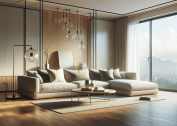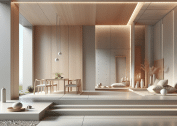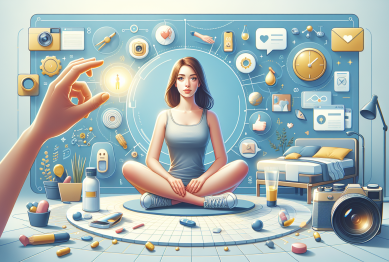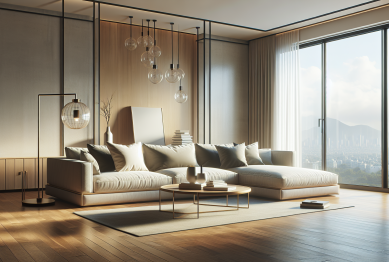Curious about how minimalist living can spark joy, boost mental clarity, and redefine comfort at home? This guide explores the key principles, popular trends, and practical benefits of adopting a minimalist lifestyle—plus detailed tips for transforming your living space with less stress and more style.
Understanding Minimalist Living and Its Appeal
Minimalist living is rapidly becoming one of the most sought-after lifestyle trends in recent years, with more people exploring how simplicity can lead to deeper fulfillment at home. At its core, a minimalist home emphasizes essentials—space, light, and only those items that add genuine value. Instead of filling every corner, this approach invites conscious selection of furniture, décor, and other belongings. Many people find that letting go of clutter leads to a lighter, more organized environment, which experts say can reduce daily stress and even boost mental clarity (Source: https://www.psychologytoday.com/intl/blog/the-clarity/202102/minimalism-and-mental-health).
The appeal of minimalist living isn’t just about having fewer things—it’s about granting yourself room to breathe and focus on what truly matters. Many followers of this lifestyle credit it with improving their sense of well-being, as spaces become more functional and visually calming. Major design platforms emphasize the connection between a minimalist aesthetic and mental well-being, citing the advantages of calm color palettes, unadorned surfaces, and open layouts. Even those in densely populated cities are discovering how this design approach maximizes small spaces and creates an oasis amidst urban chaos.
Beyond comfort and clarity, the minimalist lifestyle is also linked to mindful consumption. This means questioning every potential purchase and opting for long-lasting, versatile pieces over seasonal trends. Reducing clutter can even have an environmental impact, as people shift toward sustainability and less waste. With growing interest across age groups, minimalist communities continue to exchange ideas on sustainable living, efficient home organization, and personal growth. As a result, minimalist living stands out as more than a fleeting trend—it represents a strategy for modern individuals seeking sustainable happiness.
Key Benefits of Minimalism in Daily Life
Implementing minimalist habits at home and in personal routines often leads to wide-ranging advantages. As spaces become less cluttered, daily cleaning is faster, and maintenance becomes simpler. Reports from the National Association of Productivity & Organizing Professionals show that an uncluttered space can contribute to improved focus and better sleep patterns (Source: https://www.napo.net/page/naponc). Many who embrace minimalist living also report reduced anxiety and fewer distractions, conditions that foster both productivity and restful downtime.
Financial benefits emerge as well. By purchasing fewer, higher-quality items, many people find they save money over time. Shoppers are increasingly looking for versatile furniture and multifunctional décor, recognizing that less can truly be more. This shift toward mindful consumption often leads to reduced impulse buying and greater satisfaction with the things owned. Minimalism encourages consumers to research thoroughly, compare options, and invest in pieces that withstand trends and regular use.
There’s a social dimension to minimalist living, too. Some individuals report that uncluttered environments foster deeper, more intentional relationships. With fewer distractions, shared activities—like dining or conversation—can feel more meaningful. Minimalist settings are also easier to maintain for gatherings, creating welcoming spaces without overwhelming guests. Studies from design and lifestyle institutes highlight that minimalism doesn’t mean sacrificing comfort, but rather prioritizing quality interaction over visual busyness.
Popular Minimalism Trends in Home Design
Minimalist interior design continues to evolve, drawing inspiration from cultures worldwide. Scandinavian minimalism, for instance, prioritizes natural light, a neutral palette, and cozy textures—principles that have influenced countless modern apartments and homes. Japanese minimalism, on the other hand, champions harmony, simplicity, and multifunctional spaces. These trends underscore core minimalist principles: value, versatility, and visual calm (Source: https://www.archdaily.com/912979/japanese-minimalism-an-architecture-of-essentials).
Throughout recent years, the combination of open-concept layouts and hidden storage solutions has become highly desirable. These designs prioritize free movement, visual transparency, and clutter-free surroundings. Homeowners are increasingly drawn to floating shelves, built-in cabinetry, and modular furniture—each engineered to maximize utility without overwhelming the senses. These elements enable a seamless integration of technology and daily necessities, resulting in homes that feel both efficient and serene.
Color selection plays a crucial role in minimalism. Neutral backgrounds—whites, grays, and earth tones—are favored for their calming impact and timeless appeal. Designers advise incorporating curated accent pieces, such as a single statement artwork or vivid plant, to personalize the space without creating chaos. When sunlight and artificial lighting are thoughtfully balanced, even the most compact environments can evoke a sense of openness and tranquility. This careful attention to color, form, and light elevates everyday living while embodying minimalist values.
Decluttering and Organization Strategies for Minimalist Homes
Decluttering is often the first practical step toward achieving a more minimalist home. Experts suggest starting with the easiest categories—such as expired pantry goods or old paperwork—before progressing to sentimental items. The key is regular assessment. Ask whether each belonging serves a purpose or sparks joy, echoing the wisdom of well-known organizational philosophies. According to studies published by organizing professionals, breaking the task into smaller sessions leads to long-term success rather than temporary change (Source: https://konmari.com/tidy-home-tidy-mind/).
Storage solutions help maintain the hard-won clarity achieved with decluttering. Clear bins, drawer organizers, and modular shelving ensure each item has a designated spot. Open-concept storage—such as wall hooks or under-bed containers—adds a functional aesthetic appeal. Minimalist advocates recommend labeling containers and embracing digital solutions (such as scanning important documents), further reducing paper clutter. Over time, these strategies transform homes into efficient and peaceful environments.
Daily habits make a lasting difference. Set aside a few minutes at the end of each day to reset spaces: returning items to their proper places, wiping surfaces, and discarding unnecessary mail. Develop routines that minimize accumulation, like using a one-in-one-out rule for apparel. Embracing digital entertainment and online subscriptions also curbs the need for extra physical items, helping households remain agile—and aligned with minimalist values—in a fast-paced world.
Minimalism Beyond the Home: Mindset and Lifestyle Shifts
Minimalist living extends its reach far beyond cleaning closets or rearranging living rooms. At its heart, it champions a transformation in mindset. Followers cultivate mindfulness, focusing on experiences rather than accumulating things. For some, this shift means embracing digital minimalism, paring down digital clutter—from overwhelming email inboxes to overstuffed smartphone screens. Research from leading digital wellness organizations suggests that curating online content is as beneficial as physical decluttering (Source: https://www.digitalwellnesscollective.com/blog/2018/1/13/minimalism-and-digital-wellness).
The minimalist philosophy often catalyzes changes in daily habits, like meal planning, sustainable shopping, and mindful socializing. Cooking simpler meals with fewer ingredients, for instance, not only saves time but can contribute to better health. When combined with eco-conscious buying, this reduces waste and supports local businesses. Socially, prioritizing meaningful interactions—rather than a packed calendar—encourages balance and mental renewal.
Adopting minimalist techniques in travel, fitness, and work fosters greater freedom. Packing light for travel reduces stress and helps focus on new destinations rather than material concerns. Streamlined fitness routines built around a handful of key exercises eliminate guesswork. At work, uncluttered digital and physical workspaces foster productivity and reduce burnout. In all these ways, a minimalist mindset delivers practical advantages well beyond aesthetics—providing clarity, energy, and space for growth.
Practical Tips for Getting Started with Minimalist Living
Taking small, achievable steps is the most sustainable way to begin a minimalist journey. Experts often recommend scheduling a single “declutter session” each week, targeting one drawer, shelf, or closet at a time. Start with items that hold little emotional value, gradually building confidence and momentum. Keeping a visible donate box helps reinforce positive habits and reminds everyone in the household that the process is ongoing.
Explore digital resources, minimalist podcasts, and community forums for inspiration and support. Websites dedicated to minimalist living feature room-by-room guides, while visual apps track progress and offer encouragement. Connecting with others online—especially in minimalist communities—can help keep motivation high and provide creative solutions for unique challenges. This sense of shared discovery makes it easier to stick with new routines.
Finally, remember that there’s no single right way to live minimally. Some choose to follow strict limits, like owning only 100 items, while others adapt flexible guidelines to their unique needs. The ultimate goal is finding what works for each individual and focusing on intentional choices. Over time, these incremental changes accumulate, creating homes and lifestyles that support happiness, health, and purpose. Minimalist living isn’t about perfection—it’s about progress.
References
1. Psychology Today. (2021). Minimalism and Mental Health. Retrieved from https://www.psychologytoday.com/intl/blog/the-clarity/202102/minimalism-and-mental-health
2. National Association of Productivity & Organizing Professionals. (2022). The Benefits of Decluttering. Retrieved from https://www.napo.net/page/naponc
3. ArchDaily. (2019). Japanese Minimalism: An Architecture of Essentials. Retrieved from https://www.archdaily.com/912979/japanese-minimalism-an-architecture-of-essentials
4. KonMari. (2020). Tidy Home, Tidy Mind: The Benefits of Decluttering Your Space. Retrieved from https://konmari.com/tidy-home-tidy-mind/
5. Digital Wellness Collective. (2018). Minimalism and Digital Wellness. Retrieved from https://www.digitalwellnesscollective.com/blog/2018/1/13/minimalism-and-digital-wellness
6. The Minimalists. (2023). Resources for New Minimalists. Retrieved from https://www.theminimalists.com/resources/









